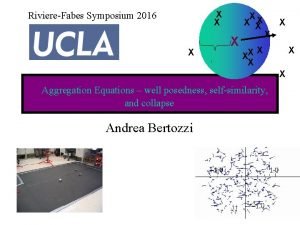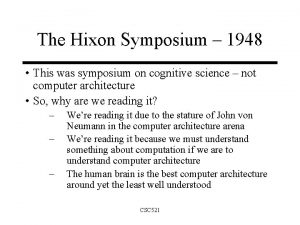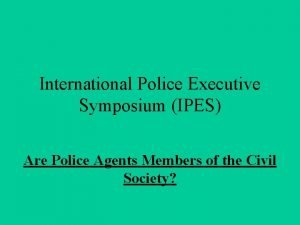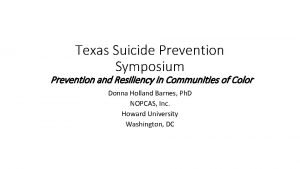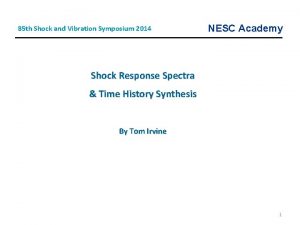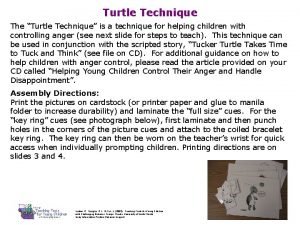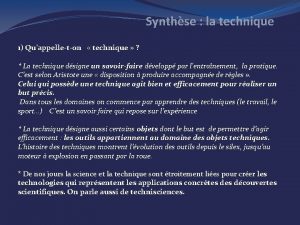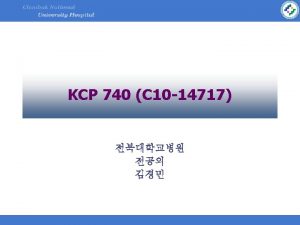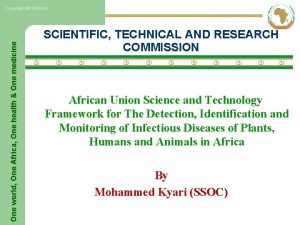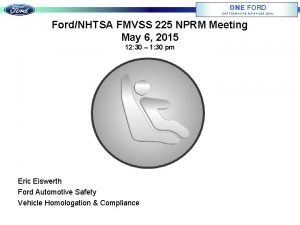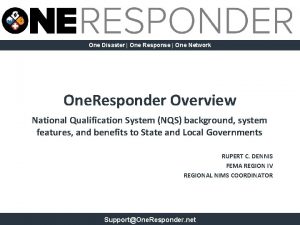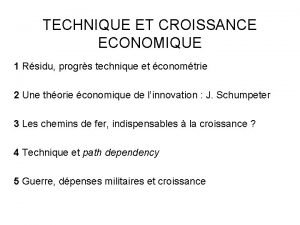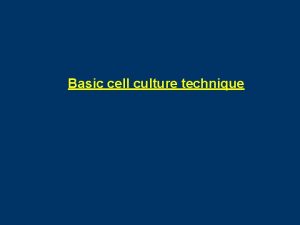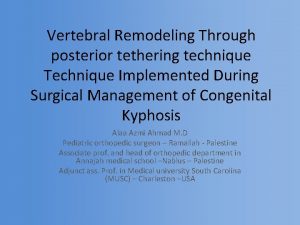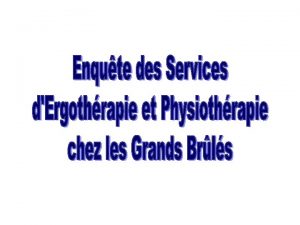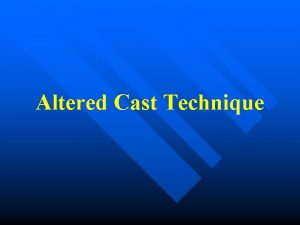SYMPOSIUM TECHNIQUE INTRODUCTION Symposium technique is one of





















- Slides: 21

SYMPOSIUM TECHNIQUE

INTRODUCTION Symposium technique is one of the techniques of higher learning. The purpose of higher learning is to develop the abilities of criticism, appreciation, to respect the ideas and feelings of others, to present own ideas and seek clarifications. It is an instructional technique which is used to achieve higher cognitive and affective objectives

MEANING • • • The word “symposium” has several dictionary meanings. “good dialogue” to present the views towards God. (Plato) the intellectual recreation or enjoyment. a meeting of persons to discuss a problem or theme.

DEFINITION “Symposium technique/forum serves as an excellent device for informing an audience, crystallizing opinion and general preparing the listeners for arriving at decision, policies, value, judgement or understanding”. In words of Struck, “we think of a symposium as a group of comments, either spoken or written, which portrays contrasting or at least different points of view”, the chief purpose of the symposium is to clarify thought upon controversial questions.

OBJECTIVES OF SYMPOSIUM • To identify and understand two various aspects of theme and problems. • To develop the ability to decision and judgment regards a problem. • To develop the values and feelings regarding a problem. • To enable the listeners to form policies regarding a theme or problem.

MECHANISM OF SYMPOSIUM TECHNIQUE The symposium is a type of discussion, in which two or more speakers, talk from ten to twenty minutes, develop individual approaches or solutions to a problem or present aspects of policy, process or program. The speeches are followed by questions or comments from the audience, as in the panel forum. The speeches may be persuasive, argumentative, informative or evocative. Each speech proceeds without interruption. The chairman of the symposium introduces the topic, suggests something of its importance, sometimes indicates the general approaches.

Cont…. Since there is no need for symposium interaction other than careful listening, all members of the performing group can sit in a straight line behind a table or an adjoining chairs, with the chairman in the middle or to one side of the speakers. Or, if the symposium is to present two conflicting points of view, the seating arrangement can separate the speakers on the platform in order to indicate difference in opinion or in order to preserve peace.

PRECAUTIONS FOR SYMPOSIUM There are three conditions in the use of the symposium technique: • Firstly the moderator should be sure to prepare the speakers or see that they are prepared. They should know the rules of procedure, sequence of speaking, and way in which the forum will be conducted; and they should be aware of the ideas, and background of other performers.

• Secondly the chairman is responsible for preparing the agendas, should not attempt to stack the cards by omitting or ignoring vital phases of the problem as he selects or delegates his speakers. It is not good to face up to an inadvertent misinterpretation or omission. • Thirdly the chairman in the forum situations must plan very carefully for the questioning period that followers the prepared speeches, unless he wishes to risk boredom.

SCOPE FOR THE USE OF SYMPOSIUM • • • The following are the main topics on which symposium technique is used: Use of television for education. Scope of distance education in our education. Use of essay and objective type tests. Semester system in education. Causes of student’s unrest. Quality control of educational research. Use of micro-teaching in teacher-education. Use of team-teaching in the schools. Use of action research in classroom teaching. Scope of education technology in our education.

CHARACTERISTICS OF SYMPOSIUM TECHNIQUE • • • It provides the broad understanding of a topic or a problem. The opportunity is provided to the listeners to take decision about the problem. It is used for higher classes to specific themes and problems. It develops the feeling of cooperation and adjustment. The objectives as synthesis and evaluation are achieved by employing the symposium technique. It provides the different views on the topic of the symposium.

LIMITATIONS OF SYMPOSIUM TECHNIQUE • • • The chairman has no control over the speakers. There is probability of repetition of the conduct because every speaker prepares theme as a whole. The different aspects of a theme are presented simultaneously. The listeners remain passive in the symposium. The discussion and presentation of theme is not summarized at the end. This technique is employed to achieve the higher objectives of cognitive domain but affective objectives are not emphasized properly.

SYMPOSIUM “The symposium is a method of group discussion in which two or more persons under the direction of a chairman present separate speeches which gives several aspects of one question”.

A symposium is a series of speeches on a selected subject. Each person or expert presents an aspect of the subject briefly. There is no discussion among the symposium members. In the end, audience may raise questions and contribute to symposium. The chairman makes comprehensive summary at the end of the entire session. Used as a teaching method, the group may consist of ‘experts’ in the subject and selected students, each of whom has prepared their particular assignment in advance. This is alternative to the lecture mention for presentation of new method.

PURPOSES OF SYMPOSIUM • To investigate a problem from several points of view. • To boost students ability to speak in group. • To make the students to study independently.

TECHNIQUES OF SYMPOSIUM • • • Teacher should plan the program ahead of time. Each members of the class, as well as the student speakers should know the objectives of the symposium and breadth of the topic. Each student should prepare on the given or accepted topic. The teacher should have a conference with each of the student speakers. The teacher or a student may function as a chairman.

• The symposium starts introducing the topic. with the • Next chairman introduces the speakers. chairman Then the topic is presented by the students taking 15 to 20 minutes time. • As a conclusion at the end the chairman gives brief summary of all the speeches and opens the discussion to the students. • Any question or contributions addressed through the chairman. •

ADVANTAGES • • It is suited to a large group or classes. This method can be frequently used to present broad topics for discussion symposium at conventions and organization meetings. Organization is good because of the set speeches prepared before hand. Gives deeper insight into the topic. Directs the students to continuous independent study. Lends itself to the teaching of clinical subjects. This method can be used in political meetings.

DISADVANTAGES • Inadequate opportunity for all the students to participate actively. • The speech is limited to 15 to 20 minutes. • Limited audience participation. • Question and answer limited to 3 or 4 minutes. • Possibility of overlapping of subjects.

CONCLUSION

 Symposium is a type of
Symposium is a type of One empire one god one emperor
One empire one god one emperor One one one little dog run
One one one little dog run One king one law one faith
One king one law one faith Byzantine definition
Byzantine definition One ford behaviors
One ford behaviors See one do one teach one
See one do one teach one One price policy
One price policy Night structure
Night structure Studiendekanat uni bonn
Studiendekanat uni bonn One vision one identity one community
One vision one identity one community Asean one vision one identity one community
Asean one vision one identity one community Riviere fabes symposium
Riviere fabes symposium Hixon symposium
Hixon symposium International police executive symposium
International police executive symposium Texas suicide prevention symposium
Texas suicide prevention symposium Metro speech language symposium
Metro speech language symposium Equally well symposium
Equally well symposium Shock and vibration symposium
Shock and vibration symposium Question about family symposium
Question about family symposium Sociolinguistic symposium
Sociolinguistic symposium Ano-ano ang sinasalamin ng epiko
Ano-ano ang sinasalamin ng epiko












